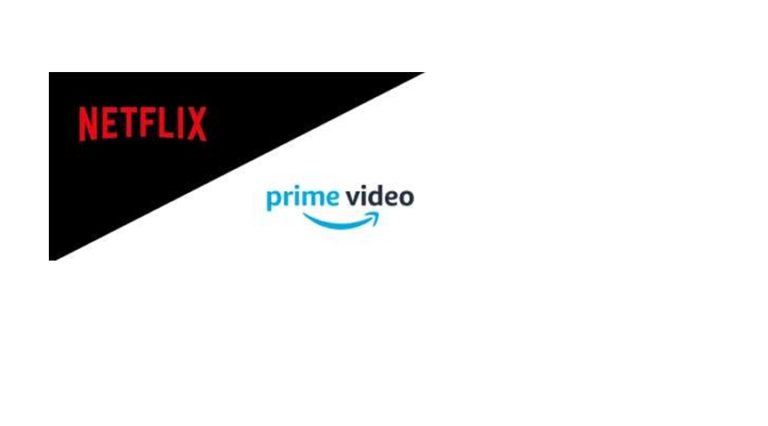In the age of technology, data has become one of the most valuable resources for companies looking to gain a competitive edge in the market. In the world of streaming, Netflix and Amazon Prime Video have both established themselves as leaders in the industry by utilizing data to their advantage.
From tracking user behaviour to optimizing marketing campaigns, data has been a crucial factor in their growth and success.
In this article, we will explore how Netflix and Amazon Prime Video have leveraged data to gain a competitive edge and how these strategies have contributed to their success.
Content Production
Netflix has been collecting and analysing user data since its inception in 1997. By tracking user behaviour, the company can determine which movies and shows are most popular, and tailor their content offerings accordingly. This has allowed Netflix to stay ahead of the competition and focus on creating content that resonates with its viewers.
In addition, data has also helped Netflix create a personalized viewing experience for its users. By analysing user data, Netflix can provide tailored recommendations based on each user’s viewing history. This has been a key factor in the company’s success, as it has allowed them to provide a more engaging viewing experience for their viewers.
For example, Netflix’s hit series “Stranger Things” was created after analysing viewership data and determining that viewers were interested in science fiction and fantasy shows. Amazon Prime’s series “The Marvellous Mrs. Maisel” was produced after identifying a gap in the market for comedy dramas set in the 1950s. Both shows have been incredibly successful, with “Stranger Things” becoming one of the most-watched shows on Netflix, and “The Marvellous Mrs. Maisel” won several awards.
Netflix also uses data to optimize its marketing campaigns. By tracking user data, they can determine which types of ads are most effective and target those ads to the right audience. This has allowed them to reach their intended demographic more effectively and maximize their return on investment. For example, Netflix uses data to determine which types of content are most likely to generate interest in certain demographics, and then creates targeted advertisements for those demographics. This allows the company to reach its target audience with the most relevant content, which in turn leads to higher engagement and conversion rates.
Recommendation
Another way Netflix and Amazon Prime retain their subscribers is through their recommendation algorithms. Both companies have fine-tuned their algorithms to provide personalized recommendations based on the viewer’s watch history. According to Netflix, around 80% of the content that is streamed on its platform is based on algorithmic recommendations. This has helped Netflix maintain a high customer retention rate, as viewers are provided with recommendations for content that they are likely to enjoy.
Like Netflix, Amazon Prime Video uses data to determine which movies and shows are most popular and tailor their content offerings accordingly. However, Amazon Prime Video takes a unique approach to personalized recommendations. Instead of relying solely on a user’s viewing history, the company also considers a user’s purchase history when providing personalized recommendations. This approach allows Amazon Prime Video to provide a more comprehensive view of a user’s interests and preferences, resulting in more relevant recommendations.
In addition, Amazon Prime Video also leverages data to optimize its marketing campaigns. By tracking user data, the company can determine which types of ads are most effective and target those ads to the right audience. This has allowed Amazon Prime Video to reach its intended demographic more effectively and maximize its return on investment. For example, the company may use data to determine which type of content is most likely to generate interest in certain demographics, and then create targeted advertisements for those demographics. This approach allows Amazon Prime Video to reach its target audience with the most relevant content, leading to higher engagement and conversion rates.
Auto-Generated Thumbnails
In a bid to make it easier for viewers to find content, they would enjoy, both Netflix and Amazon Prime use data to generate auto-generated thumbnails. These thumbnails are used to preview content and provide a quick and easy way for viewers to get an idea of what a show or movie is about. The thumbnails are generated using algorithms that analyse viewership data, such as watch time and viewer engagement, to determine which scenes are the most captivating and memorable
Streaming Optimization
To ensure that their subscribers have a seamless viewing experience, both Netflix and Amazon Prime use data and AI to optimize their streaming capabilities. They use algorithms to cache content on regional servers, ensuring that movies and shows are readily available and can be streamed without any buffering or lag. This helps to reduce frustration among viewers and increases the likelihood that they will continue to use the platform.
Customer Retention
Netflix and Amazon Prime have been incredibly successful in retaining their subscribers, with customer retention rates of 90% and 75% respectively. This is due in part to their ability to use data to provide a personalized and seamless experience to their subscribers. By using data to drive their recommendations and optimize their streaming capabilities, they have been able to retain and engage their subscribers, leading to increased revenue.
Revenue Generation
Finally, Netflix and Amazon Prime have used data to identify new revenue streams and increase their overall revenue. By analyzing viewership data, they have been able to determine which shows and movies are the most popular and use this information to negotiate better licensing agreements with content providers.
Additionally, they have used data to determine which advertising campaigns are the most effective, leading to increased revenue from advertisers. Despite their similarities, there are some differences in their approaches. Netflix uses data to provide tailored recommendations based on a user’s viewing history, while Amazon Prime Video uses data to provide personalized recommendations based on a user’s purchase history. While both approaches have proven to be effective, the latter may provide a more comprehensive view of a user’s interests and preferences, which could lead to more relevant recommendations.
Challenges
While Netflix and Amazon Prime Video have both seen significant success in leveraging data to gain a competitive edge, there are also a few challenges that they face. One of the biggest challenges is ensuring data privacy and security. With the increasing amount of user data being collected and stored, companies are becoming more vulnerable to cyber-attacks and data breaches. This can not only harm their reputation but also put their customers’ private information at risk.
Another challenge is balancing personalization with privacy. As these companies continue to collect and analyse user data, they must find a way to personalize the user experience while also protecting their customers’ privacy. This can be a delicate balancing act, as too much personalization may result in an invasion of privacy, while not enough may result in a less engaging user experience.
Additionally, the competition in the streaming industry is intense, and companies must continuously adapt and innovate to stay ahead. With so many players entering the market, it can be difficult for Netflix and Amazon Prime Video to maintain their lead and stay ahead of the competition. They must continuously use their data to identify new opportunities and make strategic decisions that will allow them to stay ahead of the competition.
Finally, there is the challenge of ensuring data accuracy and reliability. With so much data being collected and analysed, it can be difficult to ensure that the data being used is accurate and reliable. Companies must have processes in place to verify the accuracy of the data and ensure that it is being used in a responsible manner.
In conclusion, the use of data has become a crucial factor in the growth and success of companies in the age of technology. Both Netflix and Amazon Prime Video have leveraged data to gain a competitive edge by tracking user behaviour, optimizing marketing campaigns, and providing personalized viewing experiences. By utilizing data to their advantage, these companies have been able to stay ahead of the competition and provide a more engaging viewing experience for their viewers. As technology continues to advance, it will be interesting.
Dotun Adedoyin’s bio
Meet Dotun Adedoyin, an Analytics professional with a passion for using data to drive impactful business strategies in the Media, specifically in the Film/Content/Pay TV/SVOD landscape. With years of experience analysing audience needs, content performance, and platform utilization, he has earned a reputation as a skilled and insightful industry expert.
When he is not crunching numbers and data, Dotun indulges his creative side as a photographer and filmmaker, bringing a unique perspective to his work.




